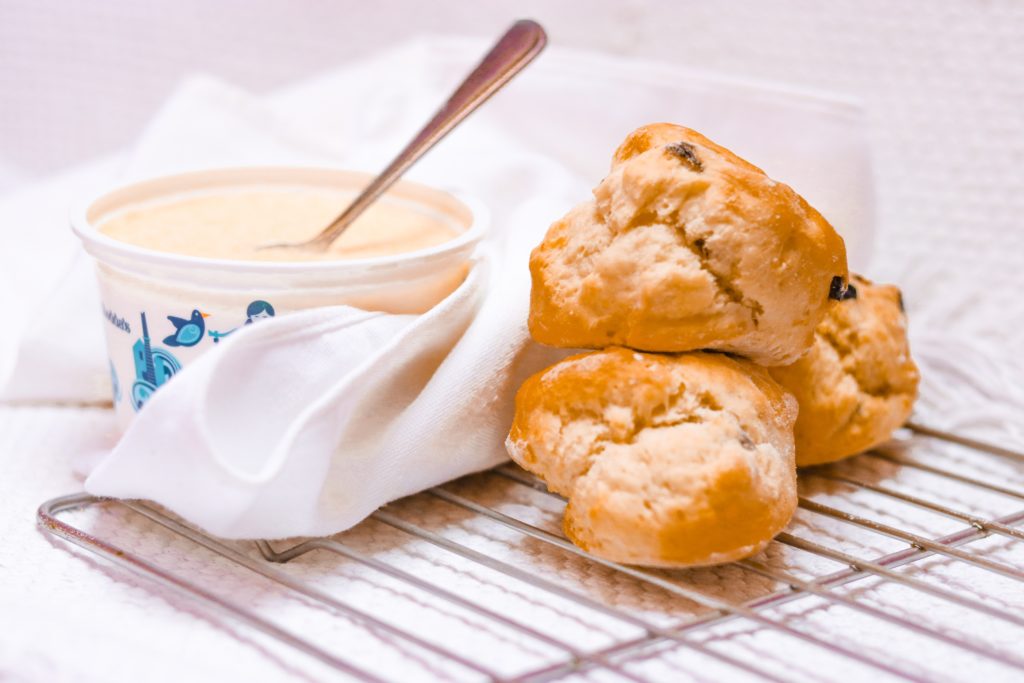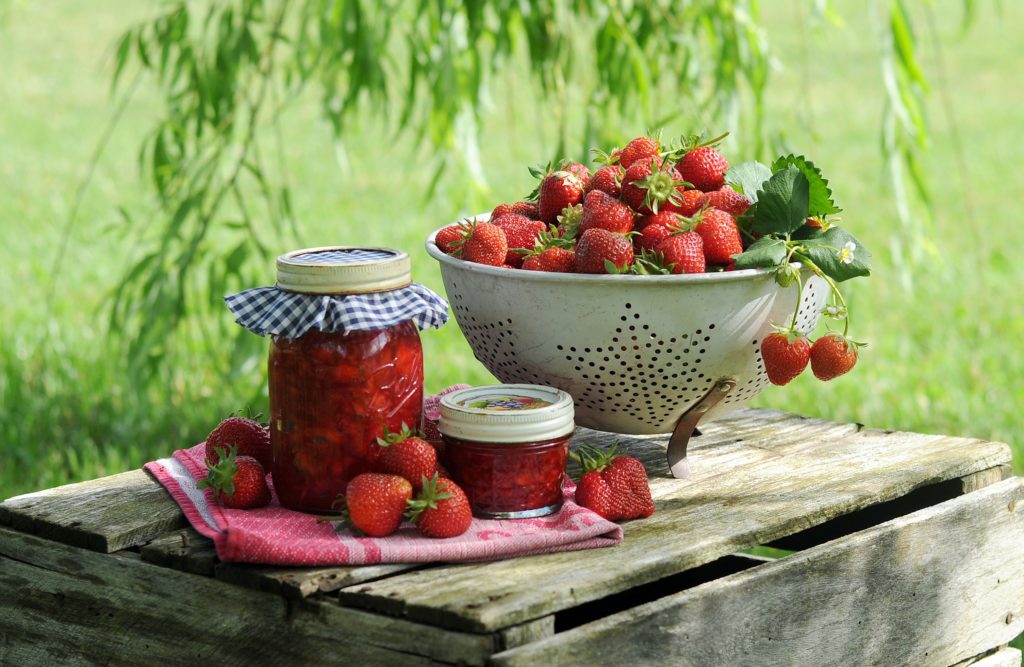As a lover of tea, I have always been fascinated by the different traditions and variations that exist within the United Kingdom.
One such distinction lies between the famous Cornish and Devon cream teas. Both counties claim to be the origin of this delightful treat and have their own unique methods of serving and presentation. In this article, we will explore the differences between the two cream teas and see what sets them apart from one another.
If you’re looking for a quick answer, here it is:
In a Cornish cream tea, the jam is spread on the scone first, followed by a layer of clotted cream. The Devonian method, on the other hand, calls for the cream to be applied first, almost like a substitute for butter, and then topped with jam. This seemingly subtle variation can lead to passionate debates between the people of Cornwall and Devon, with each county insisting that their way is the better, more authentic method.
The rest of this article is for the nerds, you have been warned!
To understand the rationale behind these different approaches, it is interesting to consider the history and traditions associated with cream tea in each county.
Cornish and Devon Cream Tea: Origins and Traditions (who got there first?)
In 997ad at Tavistock Abbey in Devon, a band of Vikings did what Vikings do best, they ransacked the abbey and tore a lot of it down.

Shortly after, in the 11th century, the Earl of Devon Ordulf (sometimes called Ordwulf) rewarded the men who helped to rebuild with bread, clotted cream and strawberry preserves (in that order I note).
But shhh, don’t tell the Cornish.
The word “scone,” a key component of a cream tea, actually has its origins in Scotland; the term “skone” comes from the Dutch word “schoonbrot,” meaning beautiful bread (tbf, it is beautiful bread).
In Cornwall, the cream tea tradition is just as beloved (although not as historically rooted – shots fired).
Tearooms and cafes throughout the county serve their own version of the treat, often following the Cornish method of spreading jam on the scone first, followed by a dollop of clotted cream.
Across the Southwest of England, cream tea is a popular choice. In fact, there’s even a Cream Tea Society dedicated to promoting and protecting the tradition of cream tea. They ensure that the ritual is preserved and enjoyed by English locals and tourists alike.
Both methods have their dedicated following, and the friendly competition between the two counties only adds to the charm of this delicious afternoon tea staple.
So, whether you prefer your scone with “jam first” or “cream first,” just remember to savour the experience and enjoy the scrumptious result.
The Key Components (what actually IS a cream tea?)
Scones
In a traditional cream tea, whether Cornish or Devon, the scone is a crucial element.

Photo by Alexandra Kusper on Unsplash
Scones are typically made with flour, butter, and sugar, resulting in a fluffy and slightly sweet pastry.
Though there are a variety of scones available, the classic plain or fruit scones are often preferred for cream teas.
A notable difference between the two cream teas is the use of Cornish splits and Devonshire splits.
Cornish splits are lighter and less rich than scones, while Devonshire splits are similar to scones but sweeter and more tender. Let’s not get started on the American tradition of calling them biscuits (wtf USA).
Personally, I find both types equally delightful and a perfect foundation for spreading clotted cream and jam.
Clotted Cream
Another essential component of cream teas is clotted cream.
This thick, indulgent cream is made from unpasteurised cow’s milk, which has been gently heated and then cooled to produce its velvety texture. There is a distinction between Cornish clotted cream and Devon clotted cream based on the milk’s origin. Cornish clotted cream, which boasts an EU Protection of Designated Origin, must be made from the milk of Cornwall cows and have a butterfat content of at least 55% (score one to Cornwall). The rich grass eaten by these cows gives the clotted cream its trademark yellow hue.
Devon clotted cream, on the other hand, comes from Devon cows and has slightly different characteristics but remains similarly delicious.
Jam
Finally, jam is an indispensable addition to cream tea, providing a fruity contrast to the rich clotted cream and scones.

Photo by Lucinda Hershberger on Unsplash
While a variety of fruit jams can be used, the traditional choice is strawberry jam.
Both Cornish and Devon cream teas typically include this delicious spread, with some variations in sweetness or texture based on individual preferences and recipes.
In my experience, a high-quality strawberry jam can elevate the cream tea experience, making it even more delightful and satisfying.
In summary, the key components of cream tea are scones (or Cornish and Devonshire splits), clotted cream made from Cornish or Devon cows, and a delicious fruit jam, typically strawberry. Each element plays an essential role in creating the perfect balance of flavours and textures.
The Great Cream Tea Debate
Arguments and Preferences
When it comes to cream teas, there’s an ongoing rivalry between Cornwall and Devon (I don’t know if you picked that up reading through).
Both counties passionately believe that their way of serving cream teas is better, with the main argument revolving around the order of toppings – should the clotted cream or jam be spread first?
I have seen this debate extend beyond personal preferences to involve discussions about sweetness levels, how the flavours complement each other, and what is more aesthetically pleasing.
A poll was conducted to determine which method people prefer, but it’s unclear if there’s a definitive winner. Preferences tend to remain divided, making this a contentious topic among cream tea enthusiasts.
Apparently, the Queen liked the Cornish way better. No idea where Charles sits on the issue.
Aesthetics vs Taste
For some, the battle between Cornwall and Devon cream teas is more about appearance than taste.
They argue that the way the toppings are layered affects the overall presentation of the scone. For instance, spreading the cream first and then adding the jam, as done in Devon, creates a smoother finish, making the dish look more appealing.
Conversely, those who advocate for the Cornish method believe it’s all about the taste and that the jam should be the star of the show, with the cream served on top as a delightful accompaniment.
Additionally, science has played a role in exploring this debate (I know, let’s hope this research wasn’t taxpayer funded eh). Some scientists have weighed in on the subject, looking into how the order in which we layer the toppings may affect our perception of sweetness. But since tastebuds can be subjective, it’s hard to come to a definite conclusion on which is the best method.
So, whether you prefer the Cornish or Devon ways of assembling a cream tea, it remains a highly debated topic that spans arguments of tradition, aesthetics, and taste. As someone who enjoys a good cream tea, I find the debate fascinating and appreciate the passion behind both sides.
Other Cream Tea Expansions
High Tea and Afternoon Tea
I have come across two other popular forms of tea time in the UK – High Tea and Afternoon Tea. Both are associated with their own sets of traditions and customs. High Tea, in particular, is a more substantial meal that usually includes sandwiches, hot dishes, and pastries.
On the other hand, Afternoon Tea is a lighter affair, focusing primarily on sandwiches, cakes, and perhaps a fruit salad. This elegant and somewhat more expensive tradition allows one to indulge in the art of baking, enjoying an assortment of treats while sipping on freshly brewed tea.
Conclusion
In my quest to understand the difference between Cornish and Devon cream tea, I have come across some essential distinctions that set the two apart. The primary variance stems from the serving method employed in each county.
These seemingly subtle differences in assembly impact the overall taste and texture of the cream tea. Dr Eugenia Cheng of Sheffield University even conducted a study which found the Cornish way to be superior since the jam prevents the cream from sliding off the scone source.

The facility where Dr. Cheng conducted her groundbreaking study (or is it CERN?) – Photo by Devon Rogers on Unsplash
Despite the ongoing debate between the two styles, both Devon and Cornwall retain deep-rooted connections to this British tradition, making it impossible to definitively label one as the original cream tea (well, obviously Devon got there first technically but the variant we enjoy today is a bit more contentious).
Ultimately, personal preference plays a significant role in determining whether one opts for jam-first or cream-first.
Although the differences between Cornish and Devon cream tea may appear minor to some, understanding both approaches gives me an appreciation of the nuances of this delicious British treat.
So, whether I’m in Cornwall or Devon or enjoying cream tea anywhere else in the UK, I’ll know that my chosen method carries centuries of tradition and regional pride.
